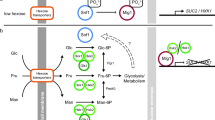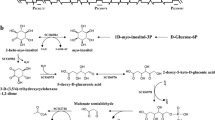Abstract
The Mig1 repressor is a zinc finger protein that mediates glucose repression in yeast. Previous work in Saccharomyces cerevisiae has shown that two domains in Mig1p are required for repression: the N-terminal zinc finger region and a C-terminal effector domain. Both domains are also conserved in Mig1p homologs from the distantly related yeasts Kluyveromyces lactis and K. marxianus, and these Mig1 proteins can fully replace the endogenous Mig1p in S. cerevisiae. We have now made a detailed analysis of the conserved C-terminal effector domain in Mig1p from K. marxianus, using expression in S. cerevisiae to monitor its function. First, a series of small deletions were made within the effector domain. Second, an alanine scan mutagenesis was carried out across the effector domain. Third, double, triple and quadruple mutants were made that affect certain residues within the effector domain. Our results show that four conserved residues within the effector domain, three leucines and one isoleucine, are particularly important for its function in vivo. The analysis further revealed that while the C-terminal effector domain of KmMig1p mediates a seven- to nine-fold repression of the reporter gene, a five- to sixfold residual effect also exists that is independent of the C-terminal effector domain. Similar results were obtained when the corresponding mutations were made in ScMig1p. Moreover, we found that mutations in these residues affect the interaction between Mig1p and the general corepressor subunit Cyc8p (Ssn6p). Modeling of the C-terminal effector domain using a protein of known structure suggests that it may be folded into an α-helix.
Similar content being viewed by others
Author information
Authors and Affiliations
Additional information
Received: 30 March 1998 / Accepted: 18 August 1998
Rights and permissions
About this article
Cite this article
Östling, J., Cassart, JP., Vandenhaute, J. et al. Four hydrophobic amino acid residues in the C-terminal effector domain of the yeast Mig1p repressor are important for its in vivo activity. Mol Gen Genet 260, 269–279 (1998). https://doi.org/10.1007/s004380050895
Issue Date:
DOI: https://doi.org/10.1007/s004380050895




